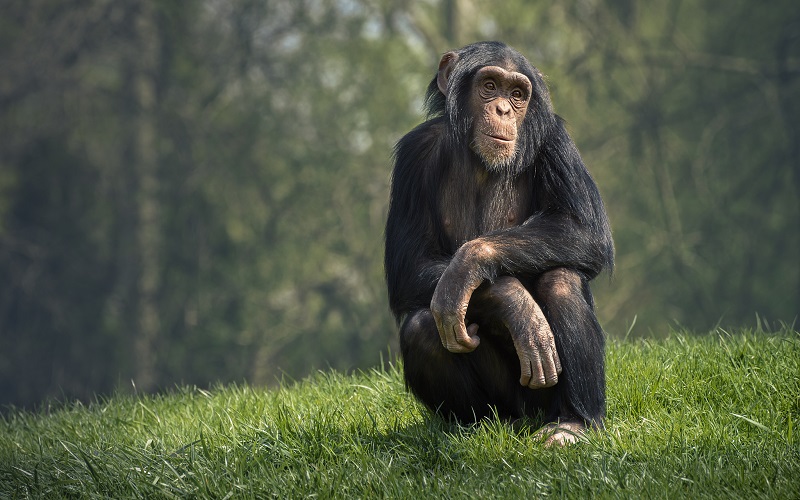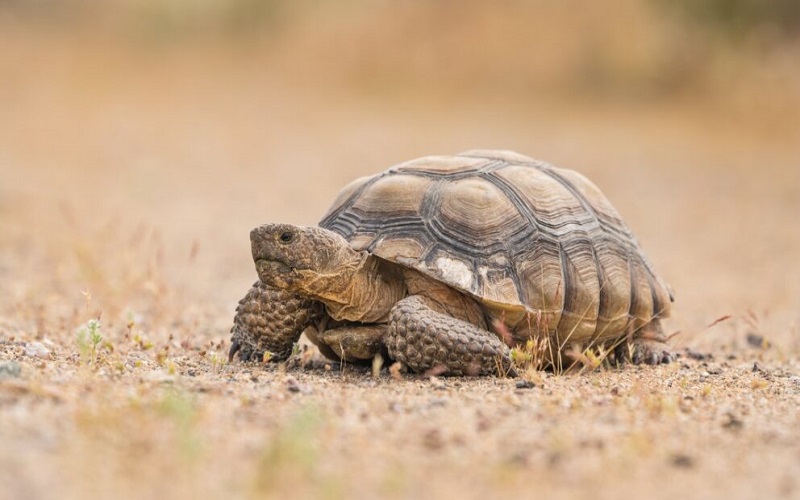World Gorilla Day is an annual observance that honors these magnificent primates and raises awareness about the urgent need for their conservation. On this day, we celebrate the diversity and importance of gorillas in our natural world and acknowledge the critical role they play in maintaining the health of their ecosystems.
The Significance of World Gorilla Day
World Gorilla Day, celebrated on September 24th each year, is more than just a day to admire these magnificent creatures. It’s an opportunity to recognize the critical importance of gorillas in our ecosystem, raise awareness about the threats they face, and mobilize action for their conservation.
Gorillas, our closest living relatives, belong to the family Hominidae, which also includes humans, chimpanzees, and orangutans. These gentle giants share a substantial portion of their genetic code with us, and studying them provides valuable insights into our own evolution and behavior.
The Fascinating World of Gorillas
A Brief Overview of Gorilla Species
There are two main species of gorillas: the Eastern Gorilla (Gorilla beringei) and the Western Gorilla (Gorilla gorilla). Each of these species is further divided into subspecies:
Eastern Gorilla:
- Mountain Gorilla (Gorilla beringei beringei)
- Eastern Lowland Gorilla (Gorilla beringei graueri)
Western Gorilla:
- Western Lowland Gorilla (Gorilla gorilla gorilla)
- Cross River Gorilla (Gorilla gorilla diehli)
Gorillas are primarily herbivorous and are known for their leafy diet, although they occasionally eat fruit. They are large, with adult males weighing between 300 and 500 pounds, depending on the species and subspecies.
Gorilla Behavior and Social Structure
Gorillas are highly social animals that live in cohesive family groups called troops or clans. A typical group includes a dominant silverback male, adult females, juveniles, and infants. Silverbacks are responsible for leading and protecting the group, which often comprises several generations of related individuals.
Gorillas communicate through vocalizations, body language, and grooming. Their expressive faces and complex social interactions are a testament to their intelligence and emotional depth. Understanding their behavior is vital for their conservation and well-being.
Challenges Faced by Gorillas
Habitat Loss and Fragmentation
One of the most significant threats to gorillas is habitat loss due to deforestation, logging, agriculture, and infrastructure development. As human populations expand, gorilla habitats shrink, leading to increased human-wildlife conflict.
Poaching and Illegal Wildlife Trade
Gorillas are hunted for bushmeat, traditional medicine, and the illegal wildlife trade. Infant gorillas are often captured and sold as exotic pets, while adult gorillas may be killed for their body parts.
Disease Outbreaks
Gorillas are susceptible to diseases that can be transmitted from humans and other animals. Diseases like Ebola have had devastating impacts on gorilla populations.
Conservation Efforts
Protected Areas and Reserves
The establishment of national parks and protected areas is a crucial step in gorilla conservation. These areas provide a safe haven for gorilla populations and allow for regulated tourism, which generates revenue for conservation efforts.
Anti-Poaching Initiatives
Anti-poaching patrols and ranger teams play a vital role in protecting gorillas from poachers. These teams work tirelessly to prevent illegal activities in gorilla habitats.
Community-Based Conservation
Engaging local communities in gorilla conservation is essential. Programs that offer education, alternative livelihoods, and incentives for protecting gorillas have shown success in reducing poaching and habitat destruction.
Scientific Research
Scientific research helps us better understand gorilla behavior, genetics, and health. This knowledge informs conservation strategies and contributes to the long-term survival of gorilla populations.
The Role of Zoos and Sanctuaries
Gorilla Conservation in Captivity
Zoos and sanctuaries worldwide participate in gorilla conservation efforts. They not only raise awareness but also contribute to genetic diversity through managed breeding programs.
Rehabilitation and Release Programs
Some organizations run rehabilitation centers where orphaned or rescued gorillas are prepared for release back into the wild. These programs aim to give gorillas a second chance at a free and natural life.
World Gorilla Day: How to Get Involved
Raising Awareness
Raise awareness about gorilla conservation by sharing information, hosting events, and participating in educational programs. Social media can be a powerful tool for spreading the word.
Supporting Conservation Organizations
Many organizations are dedicated to gorilla conservation. Consider donating to or volunteering with these organizations to support their critical work.
Responsible Tourism
If you plan to visit gorilla habitats, choose responsible tour operators and adhere to guidelines for gorilla trekking to minimize your impact on these sensitive ecosystems.
Success Stories in Gorilla Conservation
Mountain Gorilla Population Increase
The mountain gorilla population has seen a remarkable increase in recent years, thanks to dedicated conservation efforts. In the 1980s, mountain gorillas were on the brink of extinction, with fewer than 300 individuals remaining in the wild. Today, their numbers have exceeded 1,000, marking one of the most significant success stories in conservation history. This remarkable turnaround is the result of collaborative efforts between governments, conservation organizations, and local communities.
Key factors contributing to the mountain gorilla’s recovery include habitat protection, anti-poaching patrols, tourism revenue reinvestment, and community engagement. Sustainable tourism practices have allowed visitors to witness these majestic creatures in their natural habitat while providing essential funding for their protection.
Western Lowland Gorilla Conservation
Western lowland gorillas, although facing significant challenges, also benefit from dedicated conservation initiatives. Sanctuaries and protected areas in countries like the Republic of Congo and Gabon provide safe environments for these gorillas. Research and monitoring help track their populations and address health concerns.
Collaborative projects with local communities emphasize the importance of gorilla conservation while providing alternative livelihoods to reduce dependence on activities detrimental to gorilla habitats, such as logging and bushmeat hunting.
The Future of Gorilla Conservation
Gorilla conservation faces an array of challenges, from habitat loss to poaching and disease outbreaks. To secure the future of these incredible primates, it’s essential to consider sustainable solutions and foster international cooperation.
Sustainable Solutions
Sustainability is at the core of effective gorilla conservation. This means finding ways to protect and support gorillas and their habitats while also addressing the needs and concerns of local communities. Here are some key elements of sustainable solutions:
Balanced Tourism: Responsible and sustainable gorilla tourism can be a powerful force for conservation. By carefully managing visitor numbers and minimizing disturbances to gorilla habitats, tourism can generate revenue that is reinvested into conservation efforts. Striking a balance between economic benefits and ecological impact is key.
Community Empowerment: Engaging local communities in gorilla conservation is vital. These communities often share their environment with gorillas and face challenges related to human-wildlife conflict. Conservation initiatives that provide education, healthcare, and alternative livelihoods can reduce poaching and habitat destruction while improving the lives of local residents.
Research and Monitoring: Continued scientific research is crucial for understanding gorilla behavior, genetics, and health. Monitoring populations and health allows conservationists to detect and respond to emerging threats promptly.
Education and Awareness: Educating the public about the importance of gorilla conservation fosters support and advocacy. This includes outreach programs, school curricula, and awareness campaigns to engage people worldwide.
Innovation: Leveraging technological advancements, such as remote sensing, camera traps, and genetic monitoring, can enhance conservation efforts. These tools provide valuable data for tracking gorilla populations and studying their behavior.
International Cooperation
International cooperation is indispensable in the realm of gorilla conservation. Given that gorillas are found in multiple countries across Africa, collaborative efforts among governments, conservation organizations, and concerned individuals are critical. Here’s why international cooperation is key:
Cross-Border Conservation: Gorillas don’t adhere to national borders, so their conservation efforts mustn’t either. Collaborative projects that involve multiple countries ensure a more comprehensive approach to protecting gorillas and their habitats.
Resource Sharing: Sharing knowledge, expertise, and resources on a global scale strengthens conservation efforts. This includes sharing best practices, research findings, and successful conservation strategies.
Funding and Support: International cooperation attracts funding and support from various sources, including governments, NGOs, and philanthropic organizations. These funds can be channeled into critical conservation initiatives.
Policy and Advocacy: International cooperation enables countries to align their policies and regulations to combat illegal wildlife trade and poaching effectively. It also allows for coordinated advocacy efforts on the global stage.
Disease Prevention: Given that diseases like Ebola can decimate gorilla populations, international collaboration on health monitoring and disease prevention is essential. Knowledge sharing can help reduce the risk of disease transmission to gorillas.
In conclusion, the future of gorilla conservation hinges on sustainable solutions that prioritize both the well-being of gorillas and the prosperity of local communities. Furthermore, international cooperation acts as the linchpin that unites nations, organizations, and individuals in the shared goal of preserving these remarkable creatures and the ecosystems they inhabit. By working together across borders, we can ensure that gorillas continue to thrive in the wild for generations to come, enriching our planet’s biodiversity and inspiring awe in future generations.
Celebrating World Gorilla Day
World Gorilla Day is a reminder of our responsibility to protect these incredible creatures and the habitats they call home. It’s a call to action for individuals, communities, and nations to come together in the name of conservation. By celebrating and safeguarding gorillas, we not only preserve a critical part of our natural world but also contribute to the well-being of the entire ecosystem.
As we mark World Gorilla Day, let us remember that the survival of gorillas is intertwined with the health of our planet and the diversity of life that inhabits it. Together, we can ensure that future generations will continue to be inspired by the majesty of these remarkable creatures, and that gorillas will thrive in the wild for generations to come.




